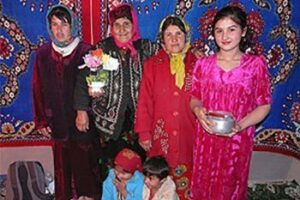
Stepping Back in Time on the Silk Road: Sheki, Azerbaijan
By Adam Bush
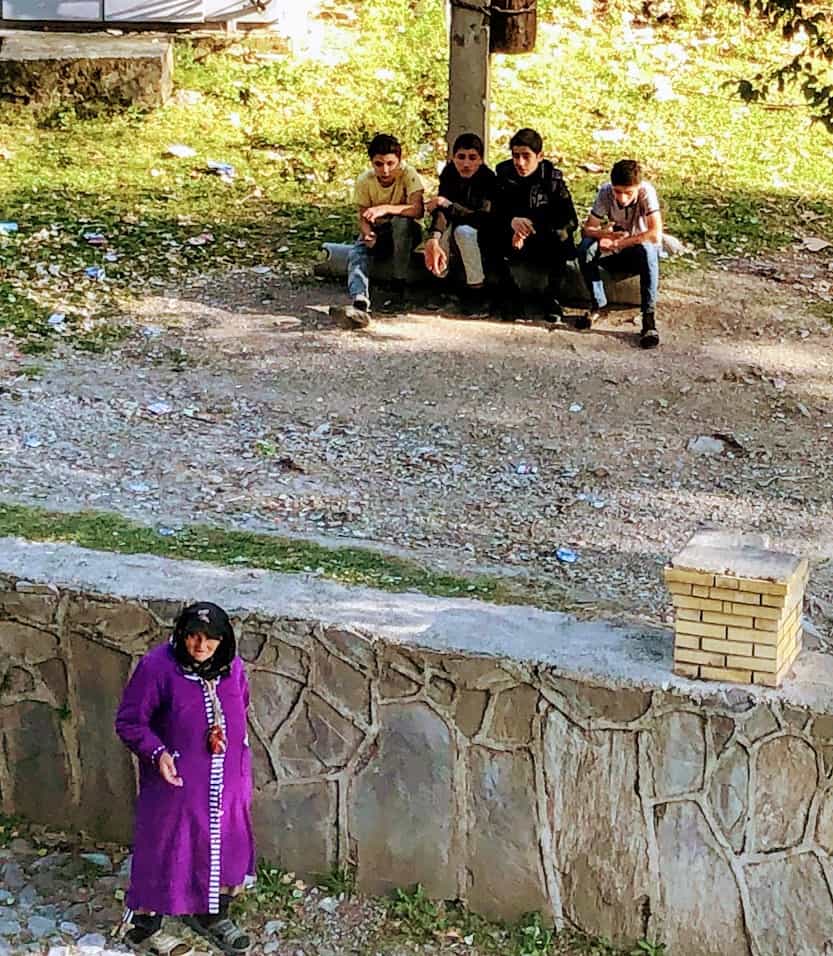
The Silk Road is a route of legends.
“What century is this?,” my wife asked as we precariously staggered over uneven cobblestone streets in the shadow of medieval architecture and curious stares from men in drab Soviet-era apparel.
Elderly women in traditional kalagha headdresses draped in 18th-century garb swept autumn’s leaves from their stone walkways using rustic wicker brooms. Old Russian Lada cars rattled down meandering streets framed by houses and fences seemingly carved from stone.
Welcome to Sheki
As we arrived in Azerbaijan’s ancient city of Sheki, the sun began its descent into the snow-capped peaks of the Caucasus mountains, and an evening fall breeze whisked across the myriad of stone gabled roofs.
Six hours ago we were mired in Baku’s bustling streets admiring futuristic skyscrapers and the glossy frontage of large shopping centers.
The bucolic drive to Sheki from Baku passing through the cities of Shamakhi, Ismayilli, and Gabbala is marked with a dramatic shift in the scenery as a barren desert gradually transitions to a lush mountainous sylvan setting. Small villages, mosques, and remains of the Soviet era sporadically dot the vast empty Azerbaijan countryside.

The Mighty Khans of Skeki Khanate
The mighty khans of the Sheki Khanate once ruled these lands rivaling the neighboring Persian and Ottoman empires. In the 1st century, it was part of the ancient Albanian empire and one of its largest cities.

The Safavids, Ottomans, and Kingdom of Georgia would all lay claim to Sheki, each exerting their influence on the region before eventually succumbing to the Mongol invasion.
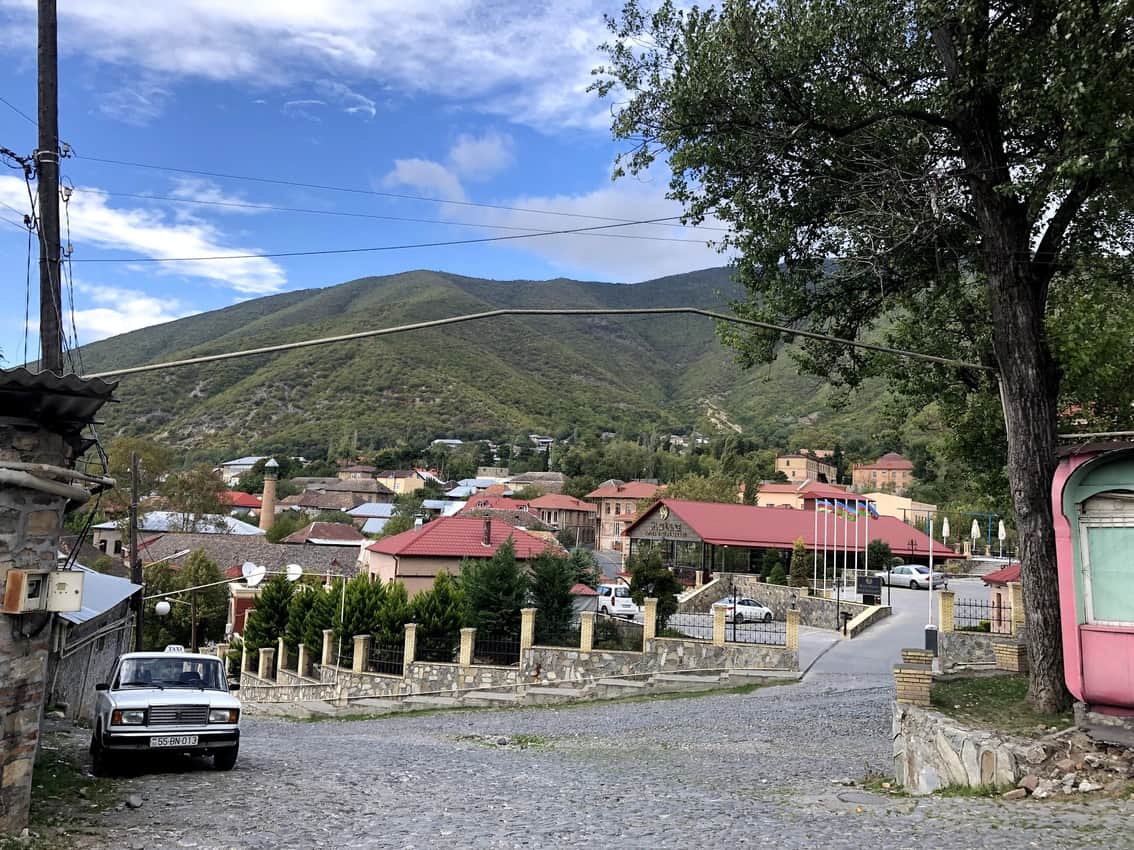
Traders and Merchants on the Silk Road
For centuries, Sheki has provided sanctuary for traders and merchants traveling the Silk Road from many regions across Europe, Asia, and the Middle East; a nexus of where cultures, religions, and ethnicities have become a harmonious melting pot.
As day broke, a quiet haze in the valley hovered above the stone roofs and chimneys of Sheki.
After enjoying a delicious spread of local cheeses, bread, and native pomegranates for breakfast, we navigated a steep winding road to Sheki Fortress positioned atop a hill in the northeast corner of the city.
Constructed mid 18th century during the reign of the first Sheki Khan Haji Chalabi, the fortress contains culturally and historically significant sites including an ethnographic museum, an armory, an old Albanian Orthodox Church, and most famously the Sheki Palace of the Khans.
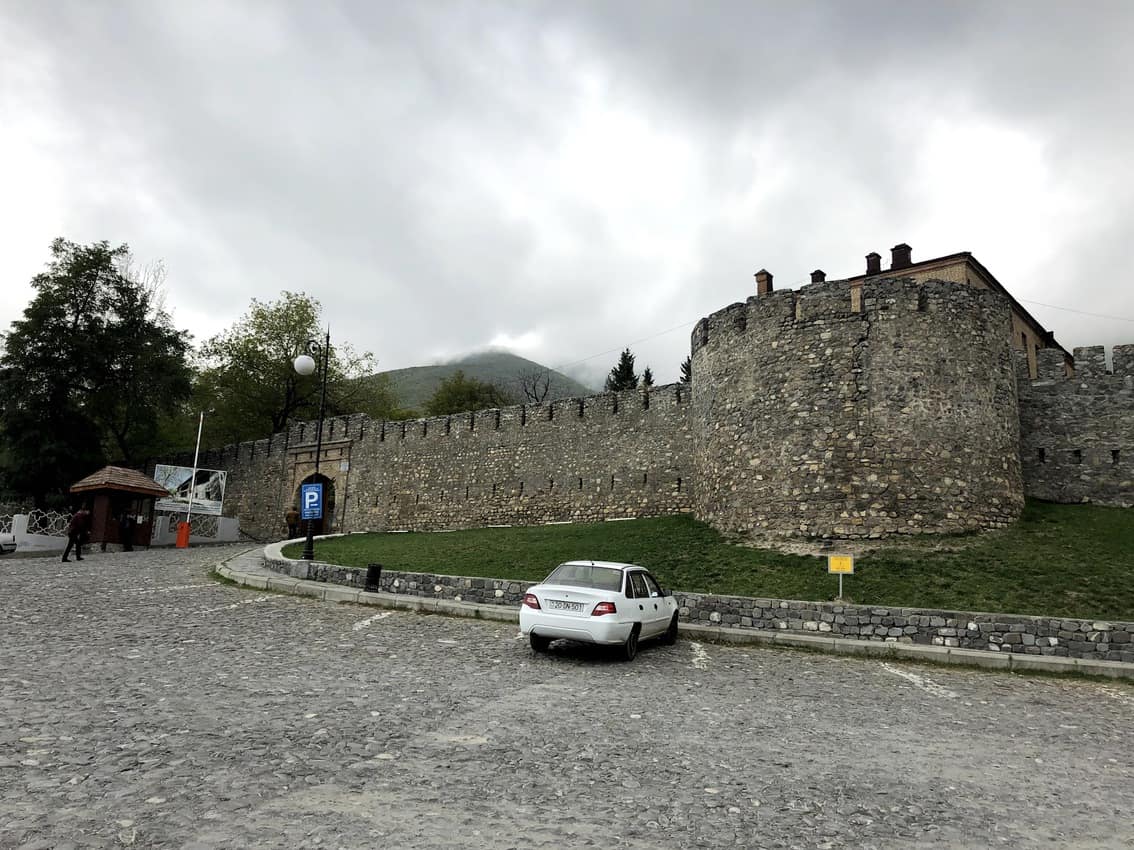
Near the entrance is a small market where locals sell indigenous handicrafts including carpets, traditional Azerbaijan clothing, pottery, baklava, and other trinkets.
Skeki’s Remarkable Palace of the Khans

The Sheki Palace of the Khans is a work of art and architectural feat of grandeur built also in the mid 18th century.
Thousands of uniform cut turquoise, red ochre, and deep blue tiles form geometric patterns illuminating the palace’s facade. Detailed hand carved muqarnas adorn the tops of elaborate stained glass window panes.
Old plane trees creak in the symmetrical courtyard as they sway softly to the wind. “Not one nail was used to construct this palace,” a guide proclaimed.
Hand-Cut Stained Glass
Inside the palace, window panes embody thousands of hand-cut stained glass pieces of varying size and color. Upon interaction with the sun’s rays, the palace’s interior becomes a mirage of ethereal lighting patterns.
“Every individual piece of stained glass had to be cut to within a millimeter of precision. Otherwise, the entire window was discarded and restarted,” said the Palace guide. “The process was so laborious and required such perfection, it often drove the craftsman mad.”
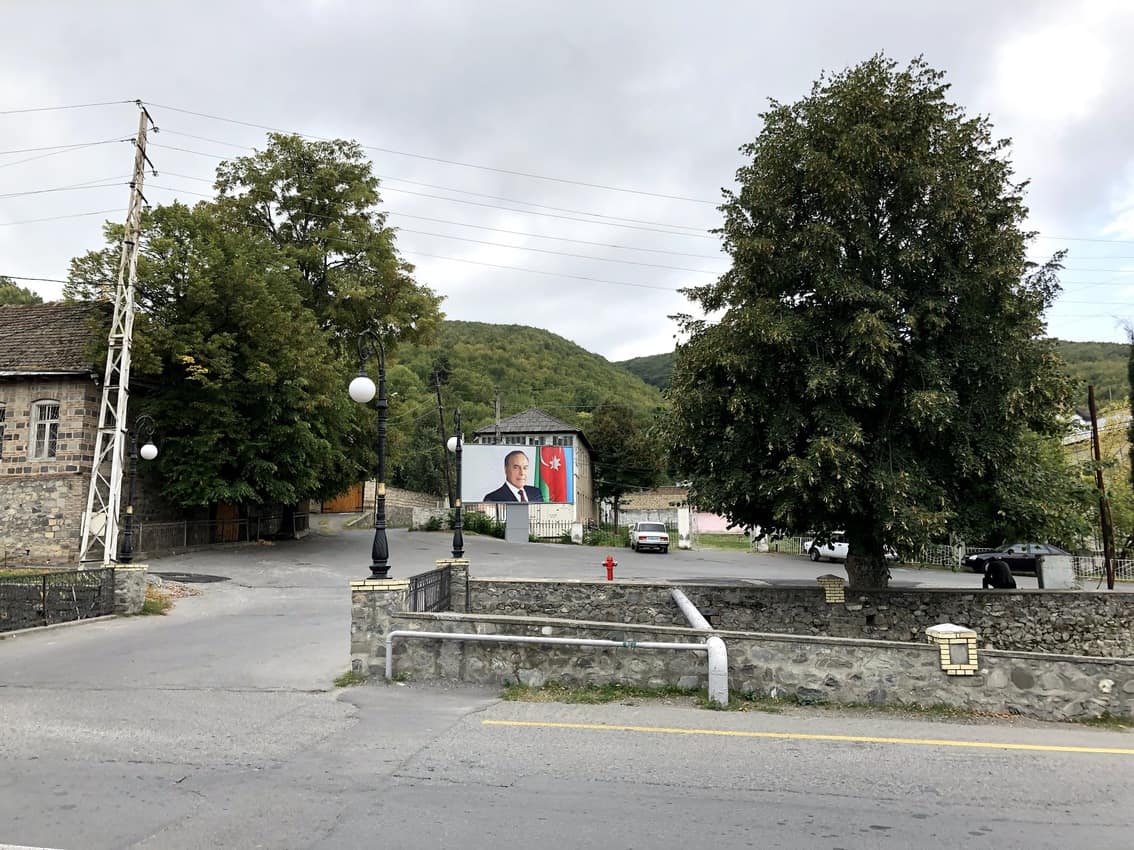
The Palace’s Fountains and Paintings
Exquisite fountains protrude from the stone floors. Melodic paintings of flowers, trees, and animals cover the interior walls and ceiling.
Murals vividly recount battles, hunting expeditions, and Sheki’s tumultuous past. Horrific scenes of soldiers parading decapitated heads on pikes, bring the brutality of the Mongol invasion to life.
“Sheki’s history is painted on these walls,” a local guide gushed to a group of Iranian tourists.
The palace itself is a manifestation of the Khan’s wealth obtained from the once-booming silkworm industry. Unfortunately, the palace’s curators strictly disallow any photographs and even a quick shot with an iPhone camera prompts immediate removal.
Ranked with the Sistine Chapel

Sheki’s Palace of the Khans could easily rank among the ranks of The Sistine Chapel, or St. Peter’s Basilica, and after being declared a UNESCO heritage site in August of 2019, it is only a matter of time before crowds of tourists are queuing at the entrance.
Back to Sheki Center
The morning haze lifted from the valley unveiling a cerulean sky and the glistening peaks of the Caucasus mountains.
Returning to Sheki’s historic center, we stopped at the famous Sheki Carvansaray built nearly 300 years ago as a roadside inn for traders, travelers, and merchants of the Silk Road which still functions as a hotel and restaurant today.
 Tall wooden doors open to a well preserved medieval stone foyer leading to an open-air courtyard reminiscent of a scene from Arabian Nights.
Tall wooden doors open to a well preserved medieval stone foyer leading to an open-air courtyard reminiscent of a scene from Arabian Nights.
Small palm trees, decorative stone benches, and eccentric plane trees garnish the courtyard surrounded by two floors of emphatic stone arches containing guest rooms.
Hooks where travelers tied their animals still remain. For a moment, I felt like I was a merchant on the Silk Road centuries prior, resting in the same caravansary courtyard under a starry Azerbaijani sky and listening to the escapades of other travelers.
Although furnished with modern items and appliances, the rooms remain as they were 300 years ago.
The Soothing Aroma of Tea
Upon exiting the caravansary a soothing aroma of tea brewing lured us into one of Sheki’s tea houses nearby. It is no secret that Azerbaijan tea is among the finest in the world, offering a selection of the most flavorful and aromatic teas anywhere.
Sheki is no exception, and teahouses in the region often act as premier social gathering venues. Tea or “Cay” in Azeri, is sacred in Azerbaijan and traditionally served in a pear-shaped glass known as an armudu.
We caught a passing marshrutka (shared taxi van) headed to the Sheki Bazaar with the intention of sampling regional cuisine and experiencing an authentic Silk Road Azerbaijani market. The marshrutka passed through a newer section of the city containing banks, stores, petrol stations, and restaurants.
Soviet Nostalgia on the Silk Road
World War II monuments and Soviet-era nostalgia serve as reminders of Sheki’s more recent history on the fringes of the USSR. An obtrusive billboard of the former president Heydar Aliyev hangs unobstructed from view near a busy street corner.

Originally head of Azerbaijani KGB when the country was a Soviet state under the USSR, his controversial tenure as president was oppressively authoritarian by many accounts. Here in Sheki, he is revered and the Heydar Aliyev museum near the Olympic complex in the south of the city deifies him.
Percolating through a sea of passengers we exited the crowded marshrutka near the Sheki Bazaar. Dozens of streets and alleyways saturated with vendors selling everything from Azerbaijani carpets, pottery, spices, bread, fish, vegetables and to no surprise, tea. Men in flatbill hats and Soviet-era clothing gathered in teahouses enjoying baklava, tea, and smoking from hookahs.

A butcher leaned against his small shop containing skinned lamb carcasses hanging in an open window, a widely consumed meat in Sheki. An abundance of pomegranates, candies, spices, and nuts perpetuate an incredible colorful vibrancy creating the most aesthetically pleasing market I’ve ever witnessed.

Cheap electronics, knock off-brand clothing, and an assortment of random consumer goods from Russia reminded me of the mega markets of Southeast Asia.
The market is a familiar Sheki tradition, a place where the local community congregates, and it has been this way for centuries. Glancing at a vendor’s large assortment of spices, herbs, and oils, I was once again portalled to the past where traders and merchants traveling the Silk Road, visited this very market and bartered for the same spices, herbs, and oils centuries prior.
Photos NOT Welcome in Sheki
Determined to capture a glimpse of Azerbaijani culture delightfully showcased by Sheki’s bustling cafes, I impulsively snapped a photo of the interior. (The photo is featured in this article).
Moments later, agitated locals surrounded me led by the photographed police officer pugnaciously demanding I delete it. I complied but was able to recover the photo later.
Afterward, I surreptitiously meandered through the stone alleyways leading to my hotel as unmarked Russian Lada cars followed me on that gusty autumn afternoon. The reality of being in a former police state of the USSR became apparent, however, I never imagined a photograph provoking such a response.
Although photography is generally acceptable in most tourist areas, it is highly discouraged in many areas of rural Azerbaijan and will summon unwanted attention. Locals often become alarmed and in some instances may notify authorities.
In Zaqatala, Azerbaijan a similar incident occurred as I attempted to photograph a government building. I soon found myself encircled by suspicious locals including a man in plain clothes insisting he see my passport. As police began to arrive our driver decided it was best to leave and so we did.
Old Soviet-era notions of suspicion and distrust of foreigners are still rooted in Azerbaijan’s vast countryside despite the Cold War ending decades ago. Always ask locals if you can photograph before doing so.
Enjoying Local Cuisine
On the edge of the market, Ganjlik Restaurant buzzing with local customers beckoned us to indulge in some local cuisine. A visit to Sheki is not complete without trying the regional delicacy, Piti.
The dish consists of fresh lamb tail, chickpeas, potato, onions, alycha, and saffron. Azerbaijani rustic bread and Barbery spices accompany the dish creating a flavorful amalgam of Silk Road culinary bliss.

While Piti is served throughout Azerbaijan, Sheki is renowned for a specific Piti that incorporates boiled chestnuts instead of potatoes, and its distinct variation is celebrated among Sheki’s residents.
The rare sight of two foreigners compelled the friendly owner of the cafe to personally deliver our Piti dishes and he enlightened us on how to properly eat Piti.
“I Show You How to Eat”
“Welcome, welcome I show you how to eat,” he said in broken English. Hospitality in Sheki is as warm as the savory tea served with every meal. The bread is ripped up on an empty plate and sprinkled with a zesty purple barberry powder.
The stew-like mixture of lamb fat, saffron, chickpeas, boiled chestnuts, and onions are then poured over the bread. Next, more ripped fresh bread and spices are added to the mixture.
The emulsified fatty mutton immersed in a rich combination of regional spices combines with the other ingredients enchanting the palate and warming the soul on a brisk fall day in the Caucasus.

Finding a delicious dessert in Sheki’s bazaar proved to be an easy endeavor. Sheki is known as the “city of sweets,” and on almost every street are shops selling bright colored candies, endless baklava, and assorted sweets.
In the Sheki bazaar scores of vendors enticed customers with their radiant displays of baklava and candies.
However, particular baklava known as Halvasi is specific to Sheki and we were not leaving until we procured some.
Filled with cardamom, hazelnuts, and coriander Sheki Halvasi is rich and its sweet crunch is complemented by a sugary syrup.
Some say it was the creation of one of the Khan’s cooks and the Khan loved it, while others say it was introduced to Sheki by merchants and traders on the Silk Road.
The late afternoon arrived and we retreated to our hotel in Sheki’s historic center. Children in school uniforms receded into the medieval stone alleyways. Teahouses clamored with men and the few small quiet pubs were illuminated, signaling they are open for business.
Once again the sun dips under the snowy peaks of the Caucasus mountains and the Imam’s call to prayer from the Juma mosque’s old minaret reverberates through the city echoing in the surrounding forested foothills. Boasting thousands of years of history, Sheki continues to provide a blissful stop for those traveling the Silk Road.
It exudes an authentic side of Azerbaijan, one of simplicity, tradition, history and cultural heritage; an old-world “untouched” feeling that one can only experience far removed from the cosmopolitan oil boomtown of Baku. Yet to experience mass tourism, the city remains isolated in an enclave of time for visitors looking to step back in time on the ancient Silk Road.
Getting to Sheki from Baku:
Take a taxi to Avtovağza l bus station in Baku:
Taxis are the most comfortable and convenient option to Sheki and should cost between 60-80 AZN and can be obtained outside of the terminal. Knowing a bit of Russian will help with negotiations. Trip time should take roughly 3-4 hours
Buses take approximately 6 hours and leave the terminal throughout the day. Cost is about 9-11 AZN. Times vary.
Marshrutka (Shared taxi van) Look for a sign in the window of Marshrutka vans that say Sheki or Şəki. Generally, Marshrutkas do not leave until full. Marshrutkas leave every several hours from the Baku bus terminal.
Nearby Attractions:
Explore the medieval village of Kish 4 Km from Sheki
Visit the Church of Kish. The first Caucasia Albanian church in the Caucasus founded by St Elishe in the 1st century on an ancient pagan worshipping site. The site contains exhumed bodies and artifacts dating back to the 3rd century
Hike deep into the surrounding mountains to visit Galarasan-Goresen fortress, the scene of an epic battle in 1744 between Haji Chalabi, khan of Shaki Khanate held up in the fortress and the powerful Persian armies of Iran under Nadir Shah.
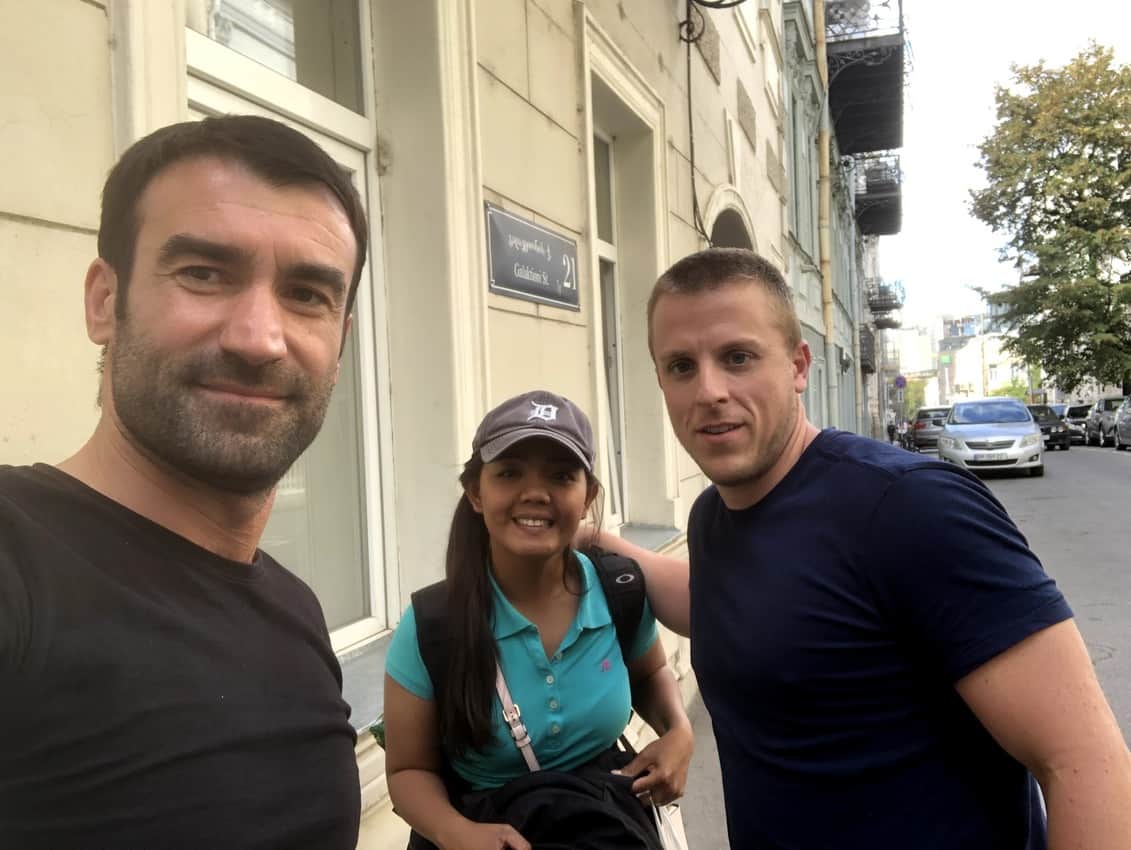
Visit the city of Qax, 5km to the north
A small village surrounded by lush forests, magnificent mountains, and abundant nature, providing scenic hiking opportunities. You will encounter few if any tourists here.
Shahdag National Park
Spreads across the districts Oghuz, Gabala, Ismayilli, and Quba. It’s home to spectacular mountainous forests, Alpine meadows, glaciers, unique rock formations, grande peaks, waterfalls, and a wide range of flora and fauna.
Park open 9 A.M to 6 P.M; visit www.eco.gov.az for more information
Drive from Sheki to Tbilisi, Republic of Georgia
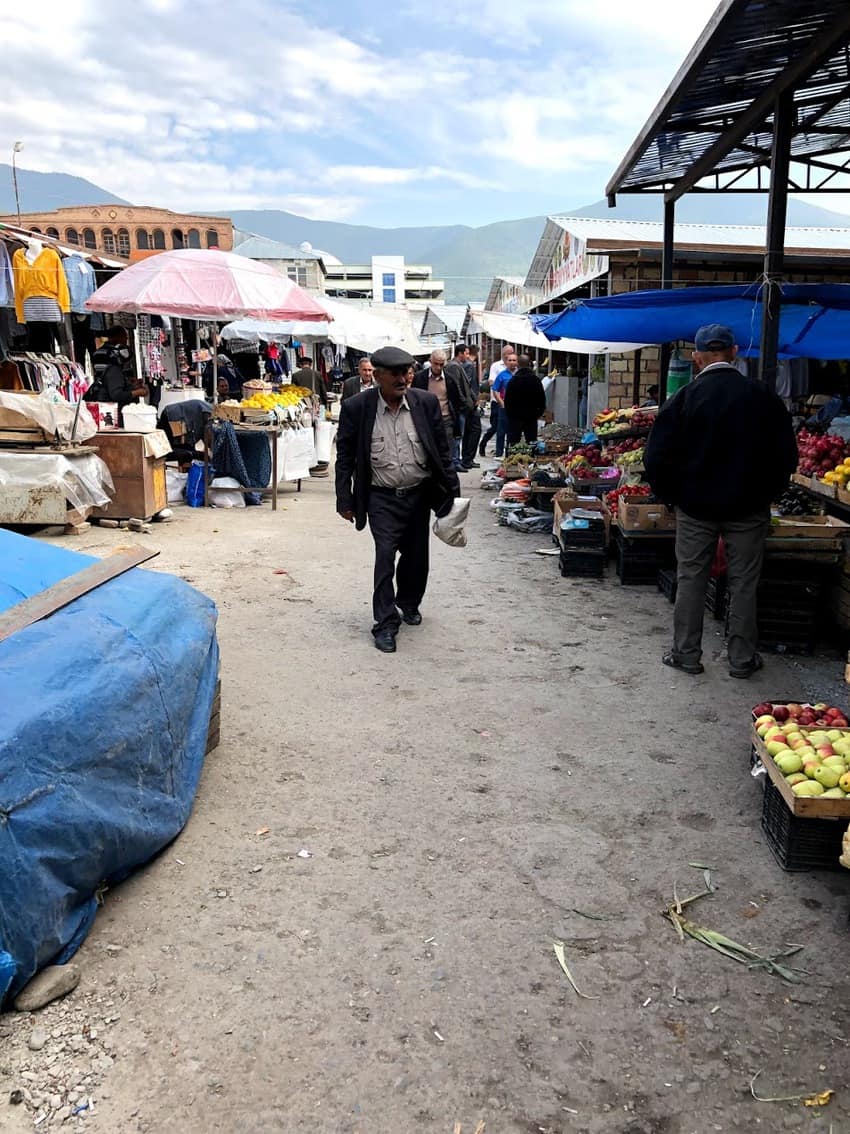
The incredibly picturesque drive to Tbilisi from Sheki passes through the Azerbaijani cities of Qax, Zaqatala, and Balkan (border town) before eventually reaching Georgia’s famous wine region of Sighnaghi.
Hotels in Sheki will often arrange for a taxi to take you from Sheki all the way to Tbilisi The cost is roughly 140- 180 manat depending on your negotiation skills. This option is the easiest and by far the most comfortable. The journey should take approximately five hours. Conversely, there is a minibus that goes to Qax, and from there a bus from Qax to Tbilisi.
On to Ganja
Ganja is Azerbaijan’s 2nd largest city. Take a taxi costing approximately 50-70 Manat. The total trip time is about three hours. From Ganja, you can catch a train to Tbilisi or Baku between 19-26 manat.
 Adam Bush is a travel writer based in Denver, Colorado, and a graduate of Morris Travel Journalism program possessing a keen interest in developing unique stories often tied to offbeat travel destinations.
Adam Bush is a travel writer based in Denver, Colorado, and a graduate of Morris Travel Journalism program possessing a keen interest in developing unique stories often tied to offbeat travel destinations.
- Camino Tales: Wine and Memories in Galicia, Spain - July 25, 2024
- Beluga Hunting in Norway - July 20, 2024
- Costa Rica: A Rainforest Chocolate Tour - July 18, 2024


